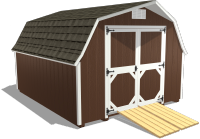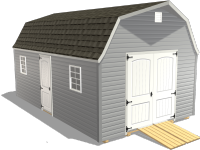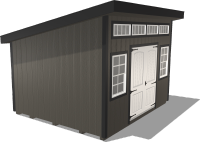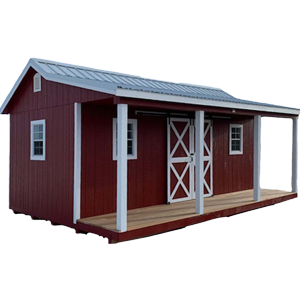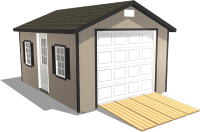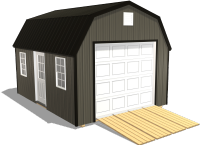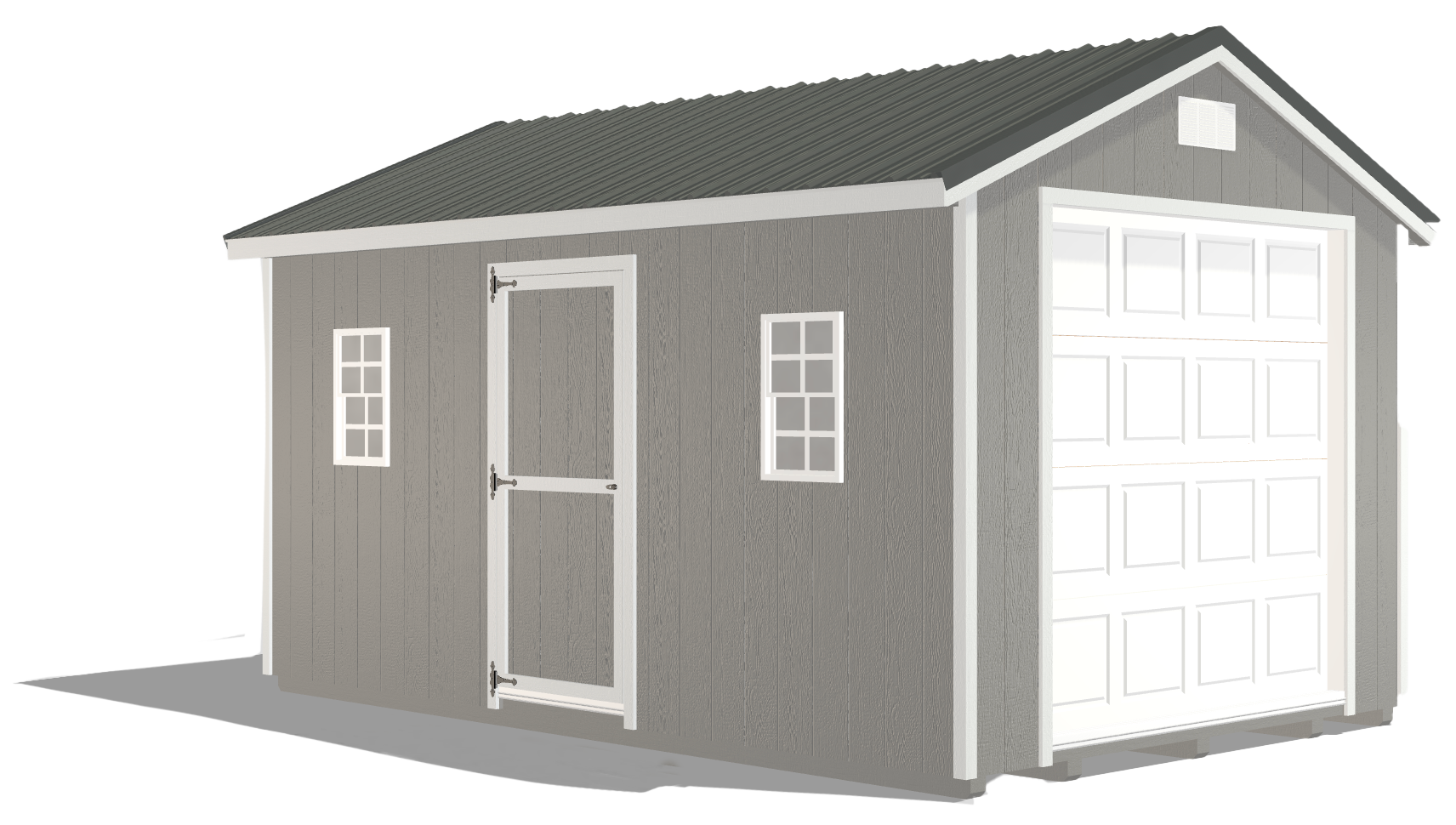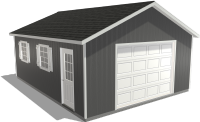How to Prepare and Use Your Greenhouse for the Winter Season
by Dakota Storage Buildings, on March 31, 2025

Many gardeners assume that gardening comes to a halt in winter, leaving their greenhouses unused during the coldest months. However, with the right preparation and techniques, a year-round greenhouse can serve as a productive space through every season—even in freezing temperatures.
A well-maintained greenhouse for the winter can protect plants from frost, extend the growing season, and allow for fresh homegrown produce.
By implementing proper insulation, heating, ventilation, and plant selection, you can transform your greenhouse. Let’s dive into the best strategies for preparing and using your greenhouse in the winter season.
Winter-Proofing Your Greenhouse for a Productive Season
Before the first frost sets in, taking the time to prepare your greenhouse is crucial. Proper preparation ensures that your plants remain healthy and protected from the harsh elements.
Here are key steps to get your greenhouse winter-ready.
Retaining Heat With Insulation
Keeping heat inside your greenhouse in the winter is essential to maintain a stable environment for your plants.
- Use bubble wrap insulation or thermal blankets on the interior walls and roof to reduce heat loss.
- Seal any cracks and gaps in the greenhouse frame using weatherproof caulking or foam strips to prevent cold drafts.
- Consider insulating the floor with mulch, hay, or foam boards, to help retain warmth from the ground up.
Keep Your Greenhouse Warm
Even with good insulation, some form of heating may be necessary during extreme cold spells.
- Electric space heaters or propane heaters are excellent choices to maintain a steady temperature.
- Position heat mats under seed trays to promote germination and early plant growth.
- Use a thermostat or temperature monitor to ensure your greenhouse does not overheat or drop to dangerous lows.
Maintain Proper Air Circulation
While heat retention is important, proper ventilation is equally crucial to prevent mold and condensation from building up.
- Keep roof vents or side vents slightly open during the day to allow excess moisture to escape.
- Use small circulating fans to maintain air movement and prevent stagnant, humid air from causing plant diseases.
- Monitor condensation on greenhouse walls and wipe down any excess moisture to reduce fungal growth.
Choosing the Right Plants for a Greenhouse in Winter
Not all plants thrive in colder temperatures, but many cold-hardy crops can flourish inside a well-maintained greenhouse in winter. Selecting the right plants ensures you have a productive greenhouse that provides fresh, homegrown produce during the winter months.
By focusing on resilient crops that tolerate lower light and cooler conditions, you can make the most of your greenhouse for winter.
Best Cold-Weather Crops

These vegetables and herbs are resilient to winter conditions and can continue producing throughout the season:
Leafy Greens: Kale, spinach, Swiss chard, arugula- These leafy vegetables grow well in cooler temperatures and can tolerate light frosts, making them perfect for winter greenhouse gardening.
- Root crops develop well in cool soil and can be harvested gradually throughout the season, providing a steady supply of fresh vegetables.
- Hardy herbs can continue growing in winter with minimal care, adding fresh flavor to home-cooked meals from your year-round greenhouse.
Starting Seeds in Winter for Spring Planting
Winter is the perfect time to get a head start on the spring season by starting seedlings early. Many plants, such as tomatoes and peppers, can be grown indoors in trays and transferred outside when the weather warms.
By utilizing a heated seed-starting area or heat mats, you can ensure strong, healthy seedlings will be ready for transplanting as soon as temperatures allow.
The Easiest Way to Grow Microgreens
For a quick-growing, nutritious option, microgreens (such as broccoli, mustard greens, and pea shoots) can be cultivated in trays within the greenhouse and harvested in just a few weeks.
These small but mighty greens are packed with vitamins and can be grown in a small space with minimal effort. Because they mature quickly, (within 10 to 14 days) microgreens provide a continuous source of fresh greens, even in the middle of winter.
Keeping Plants Healthy by Managing Light and Humidity
Shorter winter days and fluctuating humidity levels can make gardening a challenge, so managing these factors effectively is crucial for growing healthy plants.
Without proper adjustments, the low sunlight and inconsistent humidity levels may cause plants to struggle to photosynthesize efficiently. These conditions can create an environment that is either too dry or too damp, leading to poor plant health.
By addressing these challenges, you can maintain optimal growing conditions throughout the winter.

Maximizing Light Exposure
Supplemental grow lights are essential during the darker months when natural sunlight is limited. Without enough light, plant growth slows, and some crops may fail to produce altogether.
Using LED or full-spectrum fluorescent lights ensures that plants receive the necessary wavelengths for healthy development, mimicking natural sunlight. These energy-efficient lighting options provide the right balance of light and help reduce electricity costs compared to traditional bulbs.
Be sure to position lights at the correct height—typically 12 to 18 inches above plants. This is crucial because placing them too close can cause leaf burn, while positioning them too far may lead to weak, leggy growth.

Regulating Humidity
Humidity control is just as important as lighting since dry winter air and heating systems can drastically reduce moisture levels inside a greenhouse. Using water trays or pebble trays helps to naturally increase humidity by allowing water to evaporate slowly into the air, preventing plants from drying out.
Misting systems can also regulate humidity, providing gentle moisture to plants without oversaturating the soil. However, it is important to monitor humidity levels carefully. Too much moisture can lead to condensation buildup on greenhouse walls, creating the perfect environment for mold and fungal diseases.
4 Reasons to Use Your Greenhouse for the Winter
Greenhouse gardening for the winter has so many benefits. A well-maintained greenhouse provides the opportunity to keep harvesting fresh produce, protect delicate plants, and develop new gardening techniques even during the coldest months.
- Extend the Growing Season: Enjoy fresh vegetables and herbs even in the coldest months. With a greenhouse, crops that typically die off after the first frost can continue to thrive, providing fresh, homegrown food.
- Protect Delicate Plants: Overwinter perennials and shield tender crops from frost. Rather than losing plants to freezing temperatures, a greenhouse for the winter allows you to maintain your favorite flowers, herbs, and tropical plants, ensuring they are ready to flourish when spring arrives.
- Develop Gardening Skills: Experiment with seasonal growing techniques for a year-round greenhouse. Winter greenhouse gardening presents unique challenges, which help you refine your skills and become more knowledgeable about plant care in all seasons.
- Enjoy Homegrown Food: Reduce reliance on store-bought produce and savor homegrown greens all year long. A greenhouse provides a steady supply of fresh, organic vegetables, reducing grocery costs and allowing you to enjoy nutritious, flavorful food straight from your own backyard.

A greenhouse for winter gardening comes with unique challenges, but they can be easily managed with the right approach. Cold temperatures, limited sunlight, and fluctuating humidity levels can make it difficult for plants to grow, but with proper planning and adjustments, a greenhouse can remain productive throughout the season.
Temperature Fluctuations
- Use insulated covers to stabilize temperatures overnight.
- Install a digital thermometer to monitor and adjust heat settings.
Pest Prevention
- Inspect plants regularly for aphids, mites, and fungus gnats.
- Introduce beneficial insects like ladybugs or use organic sprays to keep pests under control.
Managing Energy Costs
- Opt for solar-powered heaters or LED grow lights to reduce electricity consumption.
- Use thermal mass objects like bricks or water barrels to naturally retain heat.
Prepare Now for a Successful Winter Greenhouse
A greenhouse doesn’t have to sit idle during winter. With the right preparation, you can turn your greenhouses into productive winter gardens.
By maintaining ideal growing conditions, extending the growing season, and overcoming common challenges, you can enjoy fresh produce and thriving plants in your year-round greenhouse. Don’t let winter slow down your gardening—prepare your greenhouse in advance to reap the benefits all year long!
Ready to make the most of winter gardening? Check out our stock greenhouses to find the perfect structure for year-round growing.





